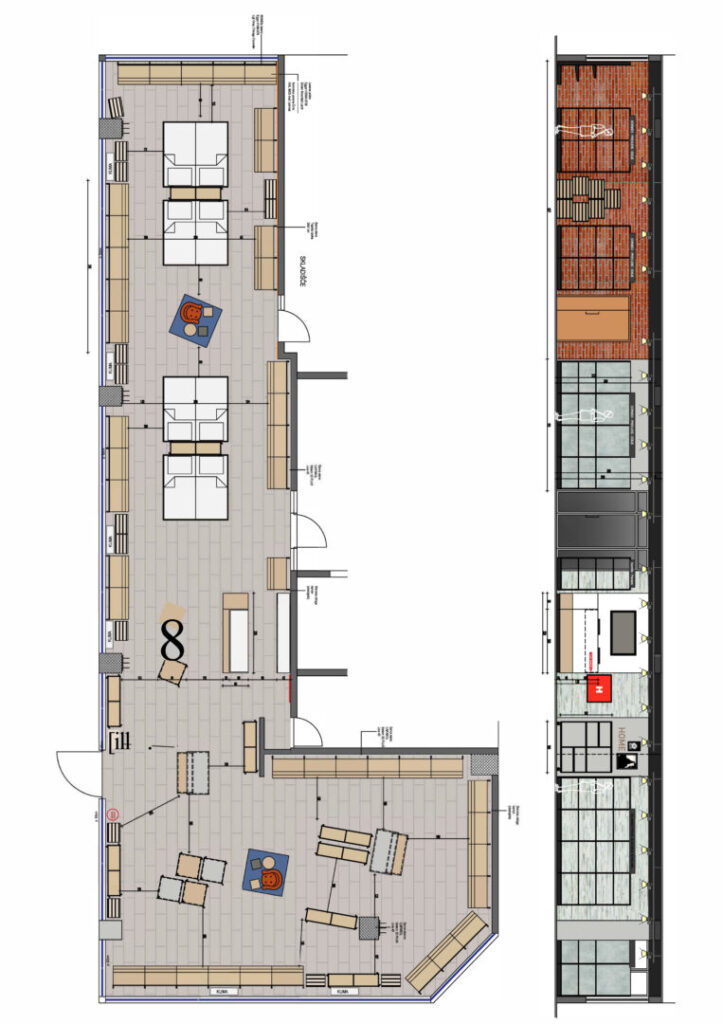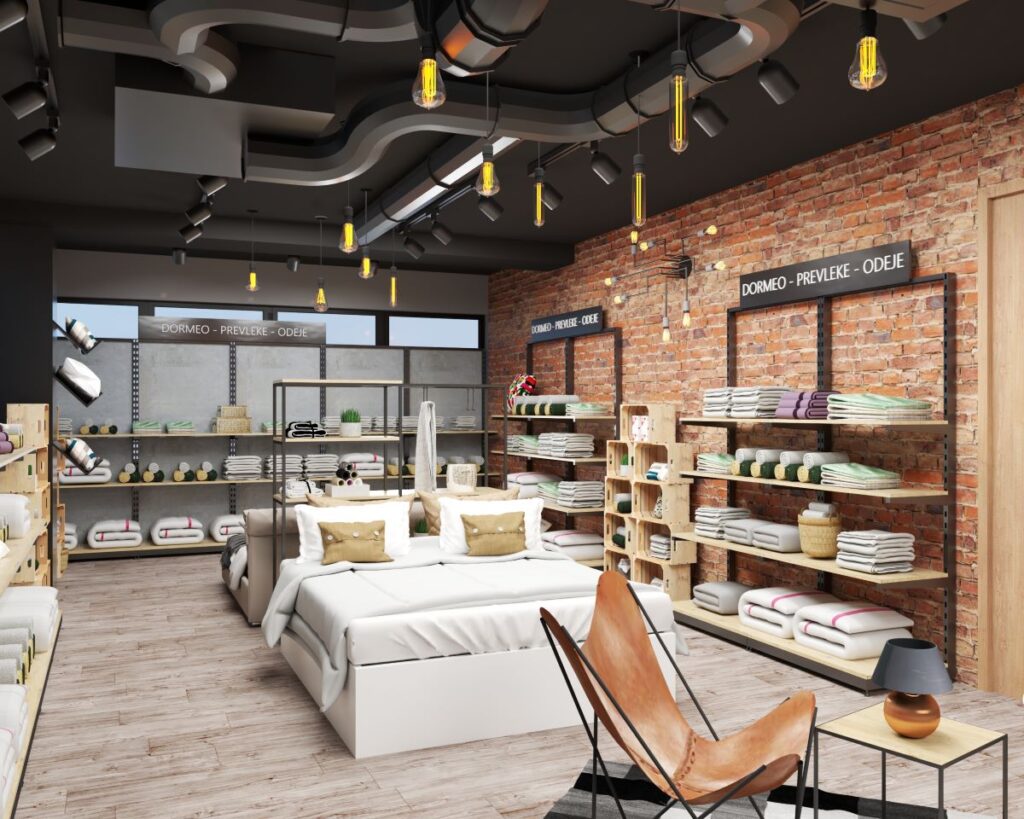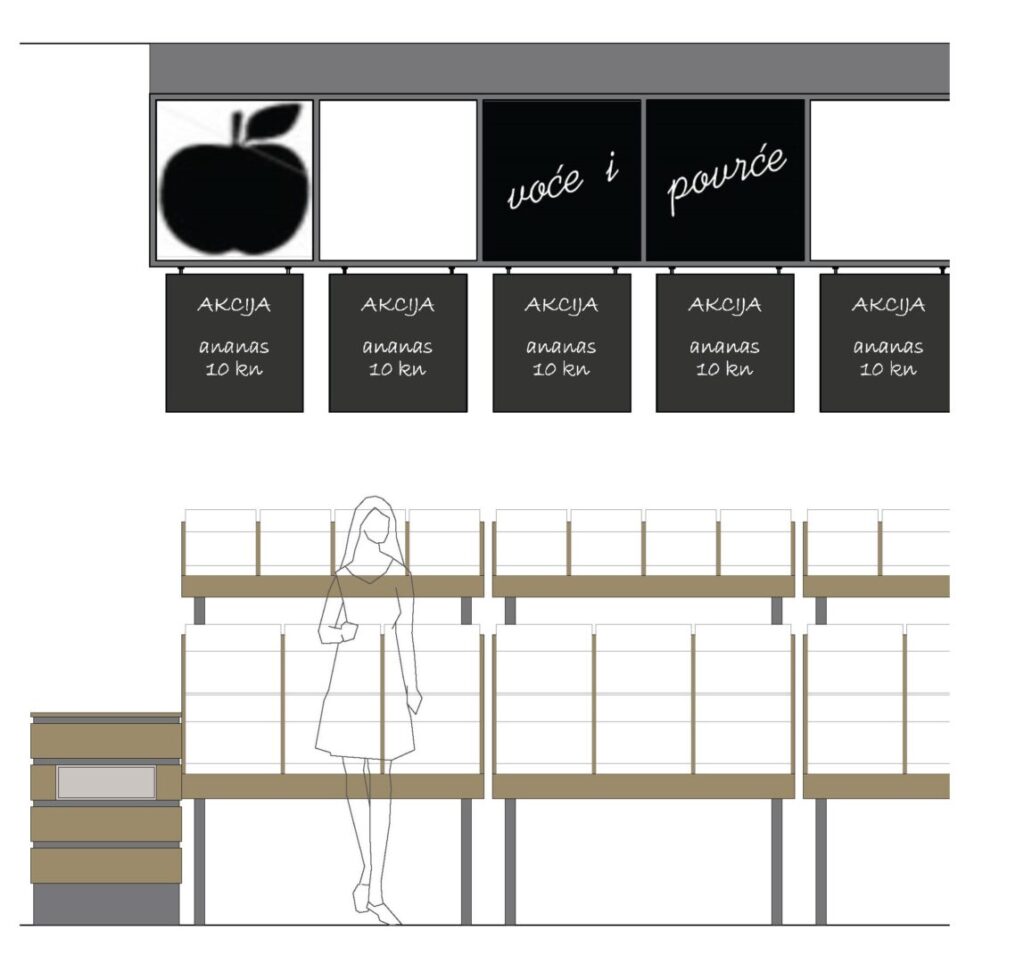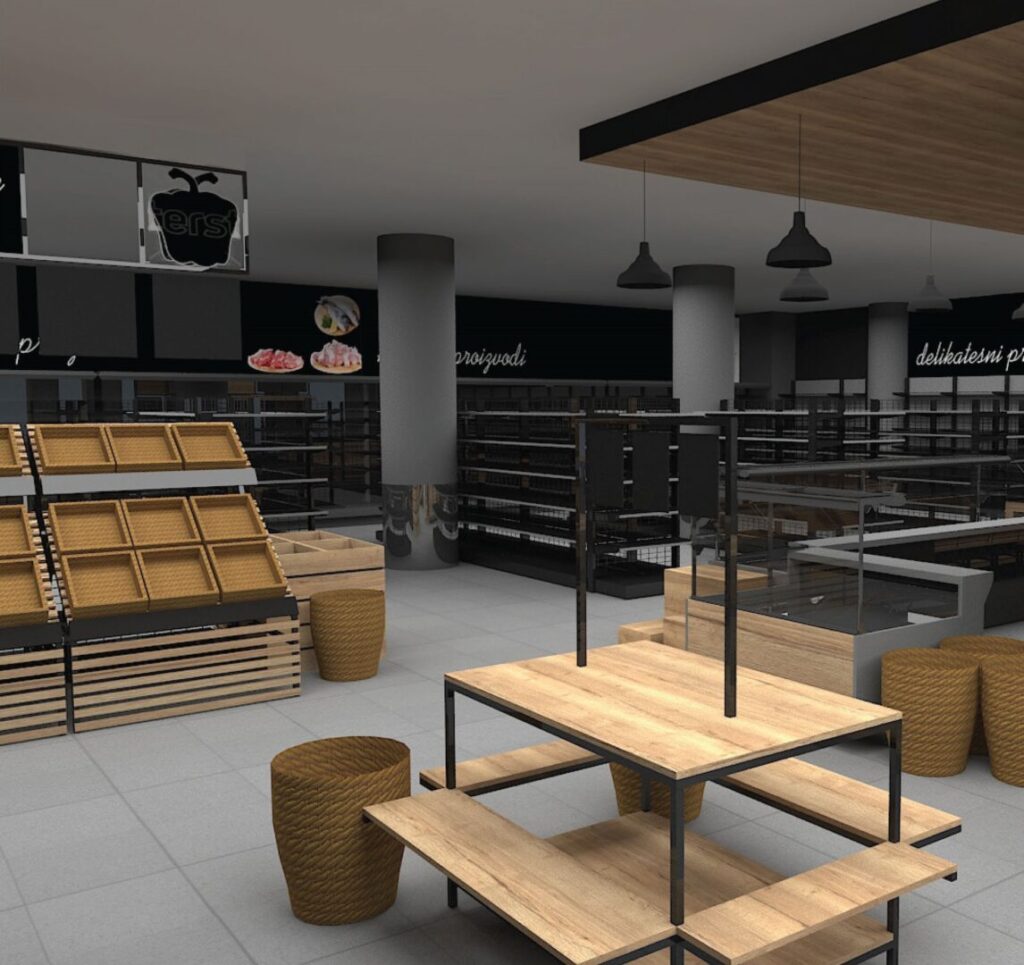RETAIL DESIGN
DESIGNING THE STORE
The retail design plays a cruical role in creating a perception of quality that sets it apart from the others. When the design and atmosphere harmonize with the company’s brand, customers tend to focus on product quality and freshness rather than solely on price.
Designing a retail space is a multi-phase process that involves both conceptual planning and implementation.
In the conceptual design phase, the sales area is carefully structured into distinct sales zones, and every detail, including equipment, materials, and color schemes, is meticulously considered. Elements such as layout, ceiling design, wall treatments, and the strategic placement of lighting are all part of this initial planning.
Once the conceptual phase is complete, the implementation phase begins, focusing on creating detailed floor plans and specifications for all necessary equipment. Maintaining open lines of communication between architects and investors throughout the project is crucial to ensure an effective product presentation and an optimized shopping experience.
The way products are presented in a retail store has a significant impact on customer behavior and sales. Effective product placement necessitates high-quality, functional equipment that enhances the presentation of products to their fullest potential. For instance, top-tier shelving systems offer flexibility in layout design and seamlessly integrate with the store’s ambiance, directing customers’ attention to products in the most appealing manner.


Efficient customer management is equally important. The incorporation of decorative ceiling elements, which also provide lighting, aids customers in navigating the store, while defining specific sections like the wine area, fresh produce, or cosmetics.
Beyond product placement and customer management, key selling points can be employed to promote specific products. Affordable items can be highlighted in dedicated sale zones, featuring pallet displays, promotional baskets, and gondola end caps. Exclusive offers can be showcased attractively using custom-designed presentation elements like tables, stands, and showcases.
The visual image of a store plays a pivotal role in stimulating purchases. The right combination of colors can captivate attention and create a welcoming atmosphere. As the saying goes, ‘colors sell…and the right colors sell better.’ Nevertheless, design elements should be employed carefully, avoiding excess, and should complement the overall aesthetic without overshadowing it. While design is important, product placement should always take center stage.
A key design element that winds through the space, connecting different sales zones, can cultivate an inviting atmosphere that encourages customers to shop with confidence.

